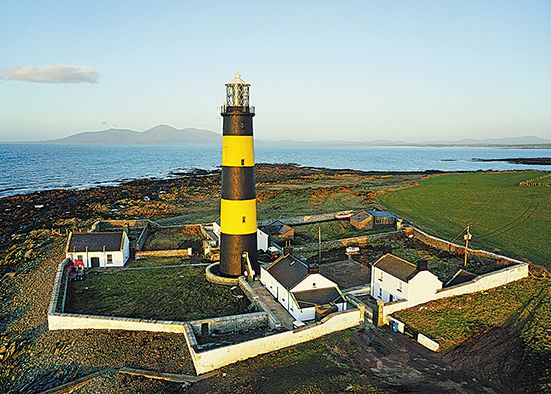‘Clear commitment’ on heritage of lighthouse
‘Clear commitment’ on heritage of lighthouse
27 November 2024

THE Dublin-based Commissioner of Irish Lights is insisting that its future plans for St John’s Point Lighthouse demonstrate its “clear commitment” to protecting the building’s heritage.
Last week, representatives from the organisation were in Newcastle for a public information event on controversial changes being proposed for Ireland’s tallest lighthouse.
The Commissioner (CIL) wants to work with the community to determine how best to protect the future of the lighthouse which involves downgrading its iconic sweeping beam.
Last week’s public information event comes ahead of a formal application to Newry, Mourne and Down Council’s planners for listed building consent.
Elected representatives, residents, community group representatives, businesses and other interested parties were invited to meet the project team and hear more about the proposed works during last Wednesday’s event at the Burrendale Hotel.
CIL is planning to replace a 1000 watt high energy lamp in the lighthouse’s Fresnel lens with a 90 watt LED bulb, insisting the move is necessary with the emphasis on improving the reliable and safe operation of the lighthouse for the mariner.
In addition, there are plans to replace a mercury bath— on which the lighthouse’s giant Fresnel lamp rotates — with a ball bearing mechanism.
CIL says the planned programme of work is necessary to ensure the “safe and reliable operation” of an aid to navigation in a sustainable way and that the rotating Fresnel lens and unique flash character of the light will be retained.
However, the plan is being vehemently opposed by the Lecale Lightkeepers campaign group which has labelled concerns over the mercury bath as a “red herring”.
CIL says the proposal is similar to projects which have already been completed at Tory Island, Rathlin West and Rathlin East lighthouses, with the St John’s Point project utilising an innovative bearing system and light technology based on extensive research.
The range of the light will be reduced to 18 miles, with the existing auxiliary light replaced by an LED equivalent, in tandem with the provision of full emergency lanterns. An existing diesel generator and its fuel source will be replaced with a battery back-up.
There are also plans to remove the existing wall lining to expose the original masonry on the lighthouse tower, with the work aimed at reducing cost and maintenance requirements.
CIL says its planned investment aims to “provide opportunities for realising the tourism potential of the site” with the work taking place if listed building consent is secured.
It says the main thrust of its proposals for the Killough lighthouse are primarily aimed at improving its reliable and safe operation, whilst protecting the structure’s “significant heritage”.
CIL’s Director of Coastal Operations Clodagh Hanratty said it was committed to engaging with the local community to ensure it is well-informed of its plans.
“The information event provided an opportunity for those interested to come and meet the team and learn more about the project,” she said.
“The proposals outlined demonstrate a clear commitment to protecting the heritage of St John’s Point, while enhancing the lighthouse’s reliability and effectiveness as an aid to navigation. “Extensive research and pilot projects have been undertaken to safeguard the heritage and to plan for future development of the site as a tourism destination.”
Ms Hanratty said key electrical and mechanical elements of the installation at St John’s Point, with a design life of 20 years, are now 23 years old and capital funding has been secured to invest in the renewal of the equipment to ensure the lighthouse installation continues to provide a reliable aid to navigation for the mariner.
She said the application for listed building consent will be advertised by Newry Mourne and Down Council and that people will have the opportunity to review the application and submissions during the process.


